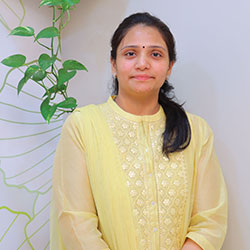IUI
Intrauterine insemination (IUI) is a fertility treatment procedure aimed at addressing infertility. It enhances the likelihood of conception by inserting specially treated sperm directly into the uterus, the organ where fetal development occurs. Another term for this procedure is artificial insemination.
IUI Procedure: What to Expect and How It Works?
Before undergoing IUI, fertility medications may be prescribed to stimulate egg maturation, aligning with ovulation for optimal chances of conception. During the procedure, your partner’s or donor’s semen sample undergoes sperm washing to isolate healthy sperm, minimizing potential reactions in the uterus. A thin tube is then inserted through your cervix into the uterus, delivering the prepared sperm directly. If successful .
fertilization occurs, the fertilized egg implants into the uterine lining. The entire process, from insemination to completion, typically lasts 5-10 minutes.
IUI is most effective for individuals with infertility of unknown origin, as well as those experiencing challenges related to cervical mucus or ejaculation.
At Ankura Hospital, our skilled fertility experts collaborate with you to assess whether IUI is the suitable option for your individual needs. We offer personalized attention and assistance at every stage, beginning from the initial consultation to ongoing follow-up care.
IVF | ICSI Treatment
IVF (in-vitro fertilization) and ICSI (intracytoplasmic sperm injection) are forms of assisted reproductive technology (ART) where fertilization occurs outside the body. Both IVF and ICSI entail a series of steps conducted over the course of several weeks.
When should you think about IVF?
It’s best to consider IVF when other methods, like IUI, have a low chance of success. This is especially true for couples facing challenges such as damaged fallopian tubes, endometriosis, pelvic adhesions, or severe male infertility.
What is the procedure for IVF?
The IVF process begins with fertility medication to stimulate egg production. Regular tests monitor hormone levels and egg development. Mature eggs are retrieved through a minor surgical procedure called egg retrieval. In the lab, eggs are combined with sperm for fertilization. Embryos develop for 3-5 days before being transferred into the uterus. Following the transfer, patients rest for the day and resume normal activities the next day. Hormone supplementation may be prescribed for early pregnancy support.
At Ankura Hospital, we’re dedicated to fulfilling your dream of starting or expanding your family. Our team of experienced fertility specialists offers personalized IVF | ICSI treatment services tailored to your unique needs and goals. With cutting-edge technology and the latest techniques, we strive to achieve the highest success rates for our patients. Let us guide you on your journey to parenthood with care and expertise.
IVM
In vitro maturation (IVM) is a procedure where a woman’s eggs are retrieved and allowed to mature outside the body. During IVM, embryologists collect immature eggs and cultivate them in a laboratory setting until they reach maturity. Once matured, the eggs are fertilized and transferred into the woman’s uterus to achieve a successful pregnancy.
IVM should be considered for:
Women at a high risk of Ovarian Hyperstimulation Syndrome, such as those with polycystic ovarian syndrome
Women with difficulties in oocyte maturation, especially if previous IVF attempts failed due to a low oocyte maturity rate
Women facing imminent cancer treatment (chemotherapy or radiation) and have limited time for fertility preservation
IVM is also seen as a safer option for patients who are sensitive to gonadotropins compared to IVF.
What is the process of IVM?
Immature eggs are retrieved and cultured in specialized media containing hormones for 24-48 hours.
The next stage involves assessing the maturity of the eggs and injecting the mature ones with sperm from the husband using ICSI.
Following this, the subsequent steps involve processes similar to those in IVF/ICSI, such as egg culture, fertilization assessment, embryo culture and evaluation, and ultimately, embryo transfer.
PGT-A
Preimplantation genetic testing (PGT) is an advanced method used to detect genetic anomalies in embryos produced through in vitro fertilization (IVF). The main goal of PGT is to enable your doctor to select embryos that are predicted to be free from specific genetic disorders or chromosome abnormalities for implantation. This testing offers patients the opportunity to reduce the risk of genetic diseases in their offspring before pregnancy.
When is the PGT-A test conducted?
The PGT-A test is typically performed after fertilization when the embryo reaches 3 to 5 days of development. During this stage, there are an adequate number of cells available from which DNA can be extracted, ensuring the accuracy of the test. Vitrification, or rapid-freezing, of embryos post-biopsy, also enables clinicians to determine the optimal conditions for implantation.
Who should undergo testing?
Couples undergoing IVF treatment
Individuals experiencing repeated implantation failure or recurrent pregnancy loss during IVF treatment
Women aged 35 and above undergoing IVF treatment
Couples experiencing recurrent miscarriages
Individuals with a family history of chromosomal abnormalities
Diagnosed carriers of chromosomal aberrations
PGT-M
Preimplantation genetic testing for monogenic diseases (PGT-M) is a potent method utilized by individuals facing an elevated risk of passing on a genetic anomaly to their offspring, including autosomal recessive, autosomal dominant, and X-linked disorders.
Preimplantation genetic testing for monogenic/single gene defects, abbreviated as PGT-M, is conducted before pregnancy to significantly lower the likelihood of having an affected child.
PGT-M entails examining embryos generated through in vitro fertilization (IVF) and subsequently transferring those that are unaffected. Formerly known as PGD, PGT-M is an early genetic diagnostic test for embryos created during IVF, conducted before their transfer to the uterus.
Through analyzing the DNA of each embryo, healthy embryos can be prioritized for transfer, initiating the path toward the conception of a healthy child.
ERA
The Endometrial Receptivity Array (ERA) is a diagnostic procedure designed to assess the readiness of the endometrial cavity for embryo implantation. It involves the collection of a small sample of the endometrium, or uterine lining, for molecular analysis through an ERA endometrial biopsy.
Problems with the endometrial lining can contribute to infertility, particularly in women with recurrent pregnancy loss or multiple unsuccessful in vitro fertilization (IVF) attempts. The ERA biopsy is often recommended for individuals who have experienced failed IVF cycles or recurrent miscarriages.
The information from an ERA biopsy helps figure out the best time for putting the embryo in the uterus, increasing the chances of getting pregnant.
Understanding the ERA endometrial biopsy
Doctors use ultrasound to check the thickness and pattern of the endometrial lining before implanting embryos during IVF. While ultrasound is commonly used, some patients with a good lining and healthy embryos still struggle to get pregnant and have a baby after IVF.
For these cases, it’s believed that the “window of implantation” may be off, reducing the chances of successful pregnancy despite good embryos. The endometrial receptivity assay (ERA) goes deeper by analyzing the endometrial lining at a molecular level, examining 248 genes to provide more insight into this implantation window.
Oocyte and Embryo Vitrification
Oocyte vitrification, also known as egg freezing, involves preserving a woman’s eggs for future use in fertility treatments. Typically, the eggs frozen in this process are immature, called oocytes.
The Procedure of Oocyte Vitrification
During vitrification, the oocytes are treated with increasingly concentrated cryoprotectant solutions to dehydrate them and prepare them for freezing. Subsequently, the oocytes are rapidly frozen, then stored in liquid nitrogen at ultra-low temperatures of around -196°C or -321°F.
Freezing can sometimes cause the egg’s shell to harden, requiring it to be fertilized by sperm through injection rather than natural fertilization in the uterus.
After thawing, the oocyte is fertilized by injecting sperm into it. Once fertilized, the embryo is transferred to the woman’s uterus, similar to the process of in vitro fertilization (IVF). The success rate of pregnancy through oocyte vitrification varies depending on factors such as the maturity of the egg and the duration of freezing.
Andrology Services
TESA
Testicular Sperm Aspiration, is a modern method for retrieving sperm and is particularly advised for men diagnosed with Azoospermia, a condition characterized by the absence of sperm in their ejaculate. Previously, individuals with Azoospermia had limited treatment options, including reconstructive surgery in cases of obstruction or resorting to donor insemination. However, the introduction of intra-cytoplasmic sperm injection (ICSI) has revolutionized the landscape, allowing many men with Azoospermia to fulfill their dream of biological fatherhood by using sperm retrieved from their epididymis or testis.
This surgical procedure for sperm retrieval is employed in men facing two main conditions: Non-obstructive Azoospermia, where the testicles fail to produce enough sperm, and Obstructive Azoospermia, where blockages prevent sperm from passing into the semen. In cases where sperm production is severely compromised, TESA represents a significant advancement in obtaining sperm directly from the testis. For men with azoospermia, the ability to father a child hinges on retrieving sperm from either the testis or epididymis. TESA is particularly utilized in instances of non-obstructive Azoospermia, where sperm retrieval from the epididymis is not feasible.
M-TESE
M-TESE is a surgical technique employed to extract sperm from a man’s testes, which are responsible for sperm production.
Performed in conjunction with IVF, micro-TESE stands as an innovative solution for addressing severe male infertility issues arising from the absence of sperm (azoospermia) in the semen, either due to anatomical blockages or extremely low to no sperm production.
Micro-TESE is advised under the following circumstances:
Absence of ejaculated sperm without any indications of blockages.
A very limited count of ejaculated sperm.
Unsuccessful attempts with other sperm extraction techniques.
Single Sperm Vitrification
Rapid freezing of individual sperm cells for use in assisted reproductive procedures like intracytoplasmic sperm injection (ICSI) is known as single sperm vitrification. With the use of this approach, the quality and viability of sperm may be preserved, providing the best possible opportunity for fertilization during fertility treatments.
Individuals with severe oligospermia and nonobstructive azoospermia typically have minimal viable sperm in their epididymal and testicular samples. Therefore, cryopreserving their sperm is undertaken to prevent the need for recurrent sperm retrievals and to safeguard their sperm from potential adverse effects of treatment regimens.
Donor treatment
When a person or couple is unable to conceive with their own gametes, donor therapy in fertility refers to the use of donated reproductive resources, such as sperm, eggs, or embryos, to help them get pregnant. When one or both spouses have infertility problems that prohibit them from getting pregnant with their own genetic material, this therapy option is frequently used. When the female partner is unable to generate viable eggs, donor eggs or embryos may be utilised, whereas donor sperm may be used in situations of male factor infertility. Through assisted reproductive technology, donor treatment enables individuals or couples to build their families and enjoy the pleasures of becoming parents.
Fertility Preservation
Fertility preservation involves preserving eggs, sperm, or reproductive tissue to allow individuals to have biological children at a later time.
Why is fertility preservation necessary?
Preserving fertility becomes crucial if certain diseases or treatments pose risks to your future ability to conceive. Conditions themselves or the medications and surgeries used to treat them can impact fertility. Also, as studies suggest, aging affects fertility, prompting individuals to consider preserving their reproductive potential.
Age: Those waiting to have children may opt for preserving eggs or sperm to mitigate the effects of declining fertility as they age. Common reasons include career aspirations, educational pursuits, or waiting for the right partner.
Cancer: Treatments like chemotherapy, radiation, and cancer surgeries can affect fertility.
Autoimmune diseases: Conditions like lupus or rheumatoid arthritis and their treatments might lead to fertility issues.
Reproductive health disorders: Conditions such as endometriosis or uterine fibroids can hinder conception.
At Ankura Hospital, we offer fertility preservation services like egg freezing, sperm freezing, and embryo freezing. Our expert team will help you choose the best option for your needs and goals.
Dr. R.L.N Renuka
Dr. Lalitha Devi
Dr. Nameeta Mokashi Bhalerao
Dr. Shalini Singh
Dr. Manorama Kandepi
Dr. Rahul Reddy G
Dr. Prathyusha Gunreddy
Dr Supriya Puranik
Dr Sreevani Kotha
Get In Touch With Us
Please feel welcome to contact our friendly reception staff with any general or medical enquiry. Our doctors will receive or return any urgent calls.










